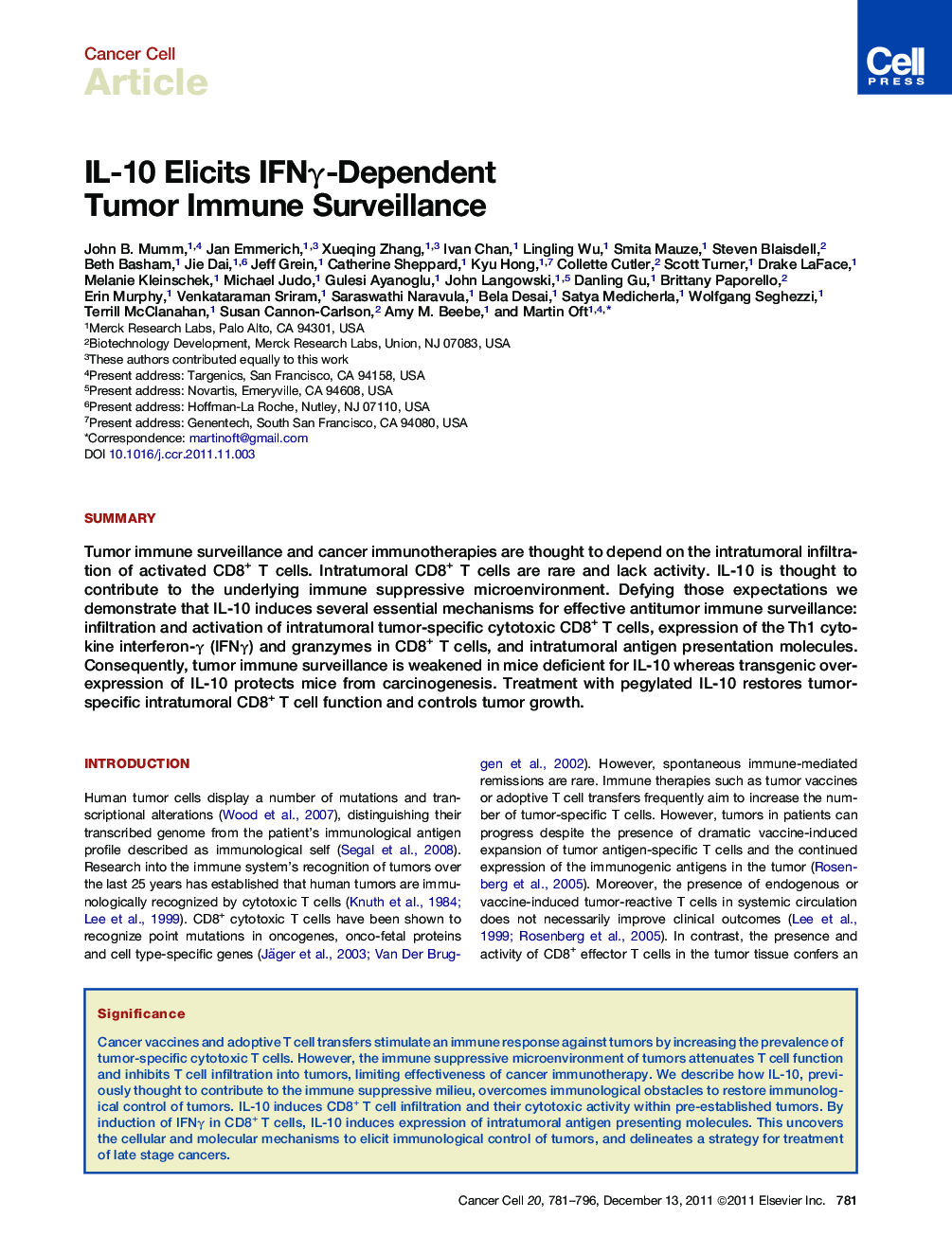| Article ID | Journal | Published Year | Pages | File Type |
|---|---|---|---|---|
| 2108140 | Cancer Cell | 2011 | 16 Pages |
SummaryTumor immune surveillance and cancer immunotherapies are thought to depend on the intratumoral infiltration of activated CD8+ T cells. Intratumoral CD8+ T cells are rare and lack activity. IL-10 is thought to contribute to the underlying immune suppressive microenvironment. Defying those expectations we demonstrate that IL-10 induces several essential mechanisms for effective antitumor immune surveillance: infiltration and activation of intratumoral tumor-specific cytotoxic CD8+ T cells, expression of the Th1 cytokine interferon-γ (IFNγ) and granzymes in CD8+ T cells, and intratumoral antigen presentation molecules. Consequently, tumor immune surveillance is weakened in mice deficient for IL-10 whereas transgenic overexpression of IL-10 protects mice from carcinogenesis. Treatment with pegylated IL-10 restores tumor-specific intratumoral CD8+ T cell function and controls tumor growth.
Graphical AbstractFigure optionsDownload full-size imageDownload high-quality image (144 K)Download as PowerPoint slideHighlights► PEG-IL-10 induces the CD8+ T cell-mediated regression of large tumor masses ► IL-10 directly induces cytotoxic enzymes and IFNγ in CD8+ T cells ► IL-10 induces antigen presentation indirectly through CD8+ T cell-derived IFNγ ► In human tumors, IL-10 expression correlates with granzymes, IFNγ, and MHC
